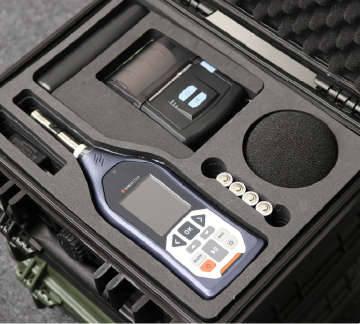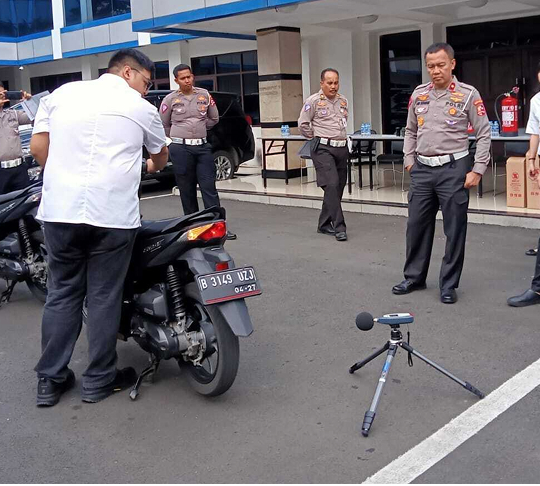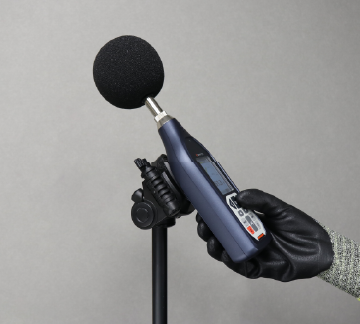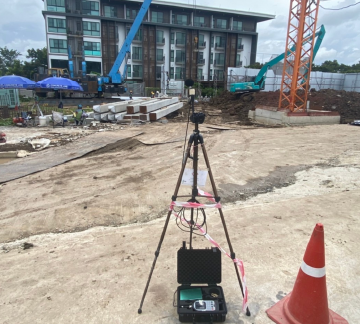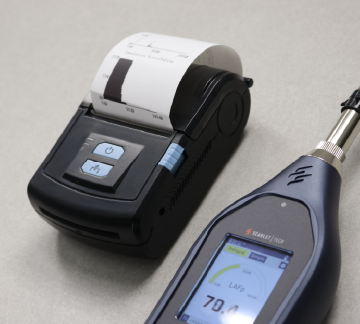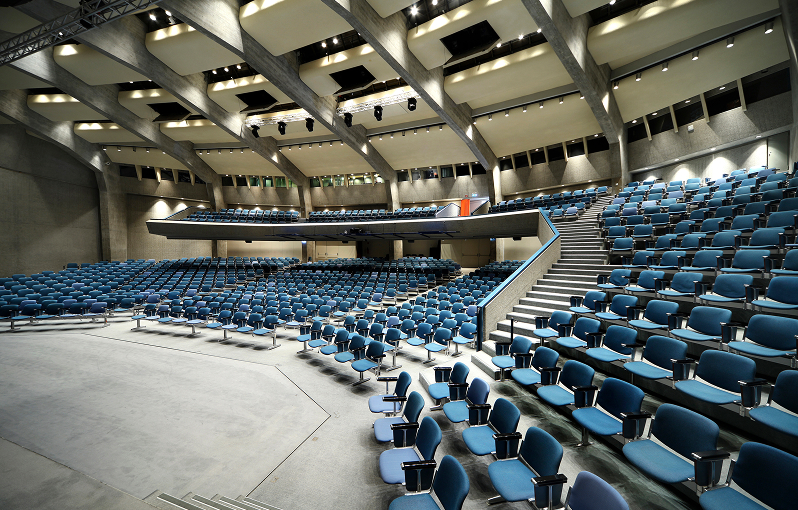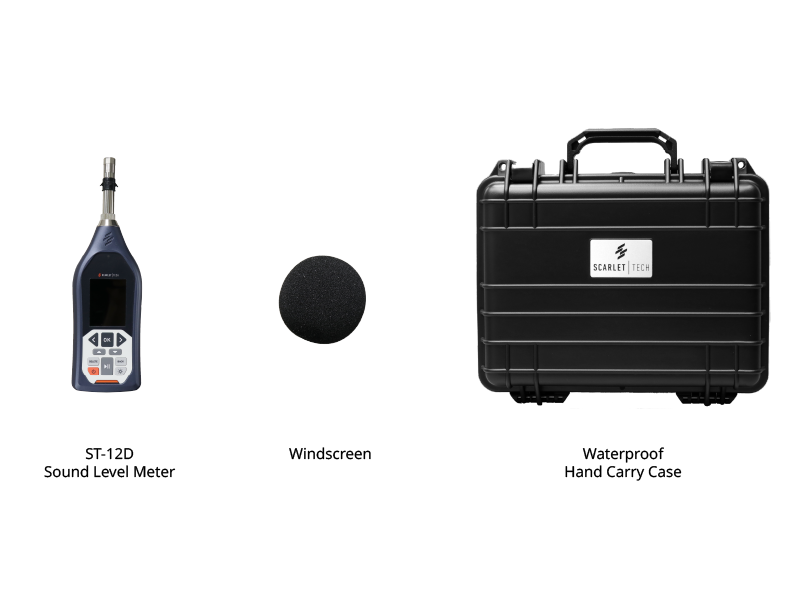
ST-12D Class 1 Integrating SLM
Overview
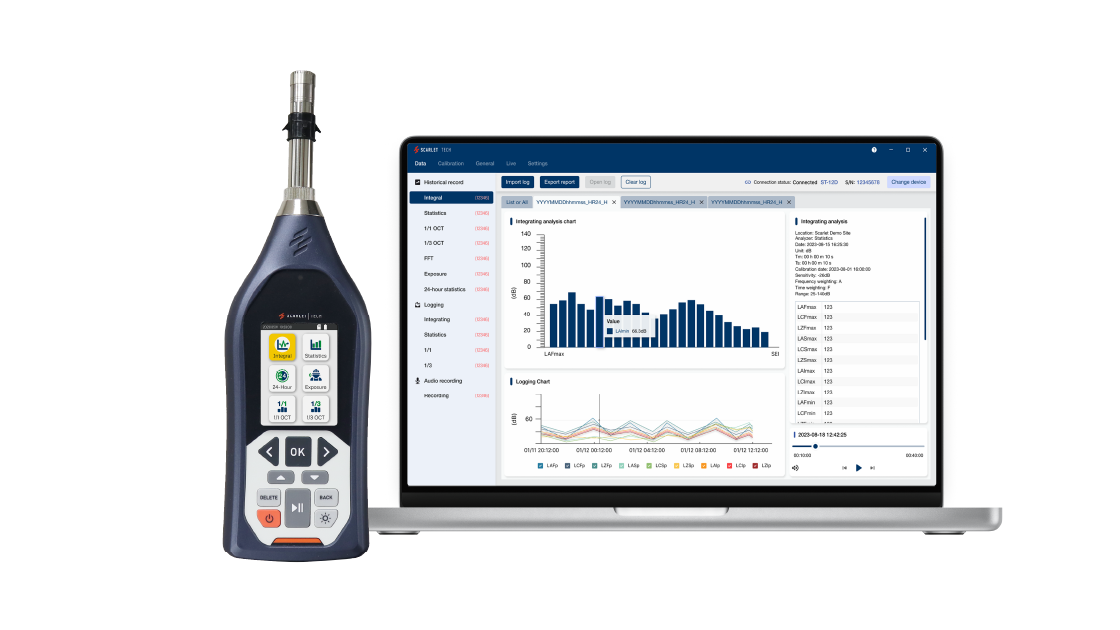
- 1
- 2
- 3
- 4
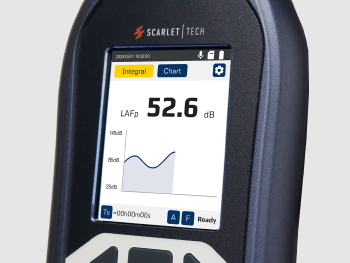
2.4" Vivid Display
The full-color display allows for clear measurement readings with a user-friendly interface, intuitive charts, and graphs.
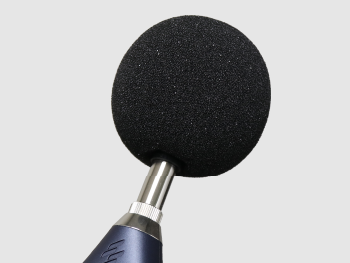
Microphone
ST-12D measures noise levels from a detachable 1/2 inch prepolarized condenser microphone with ±0.5 dB accuracy.
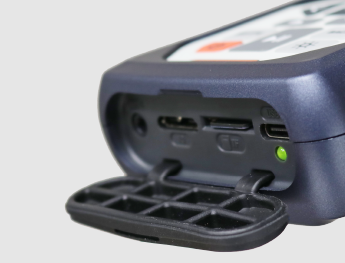
Output Interfaces
ST-12D includes USB-C, serial, and AC/DC ports, making it easy to connect and integrate with your system.
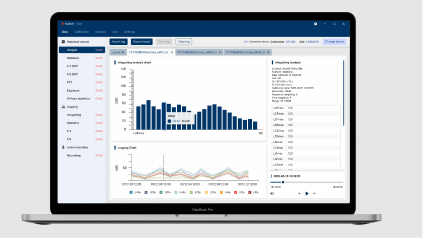
ScarletSound
The dedicated PC software for ST-12D user to view noise data, check audio recording and export log file for further report and analysis.
Class 1 Sound Level Meter
High Precision
Full Capabilties
Large Storage
Parallel Analysis
Key Features
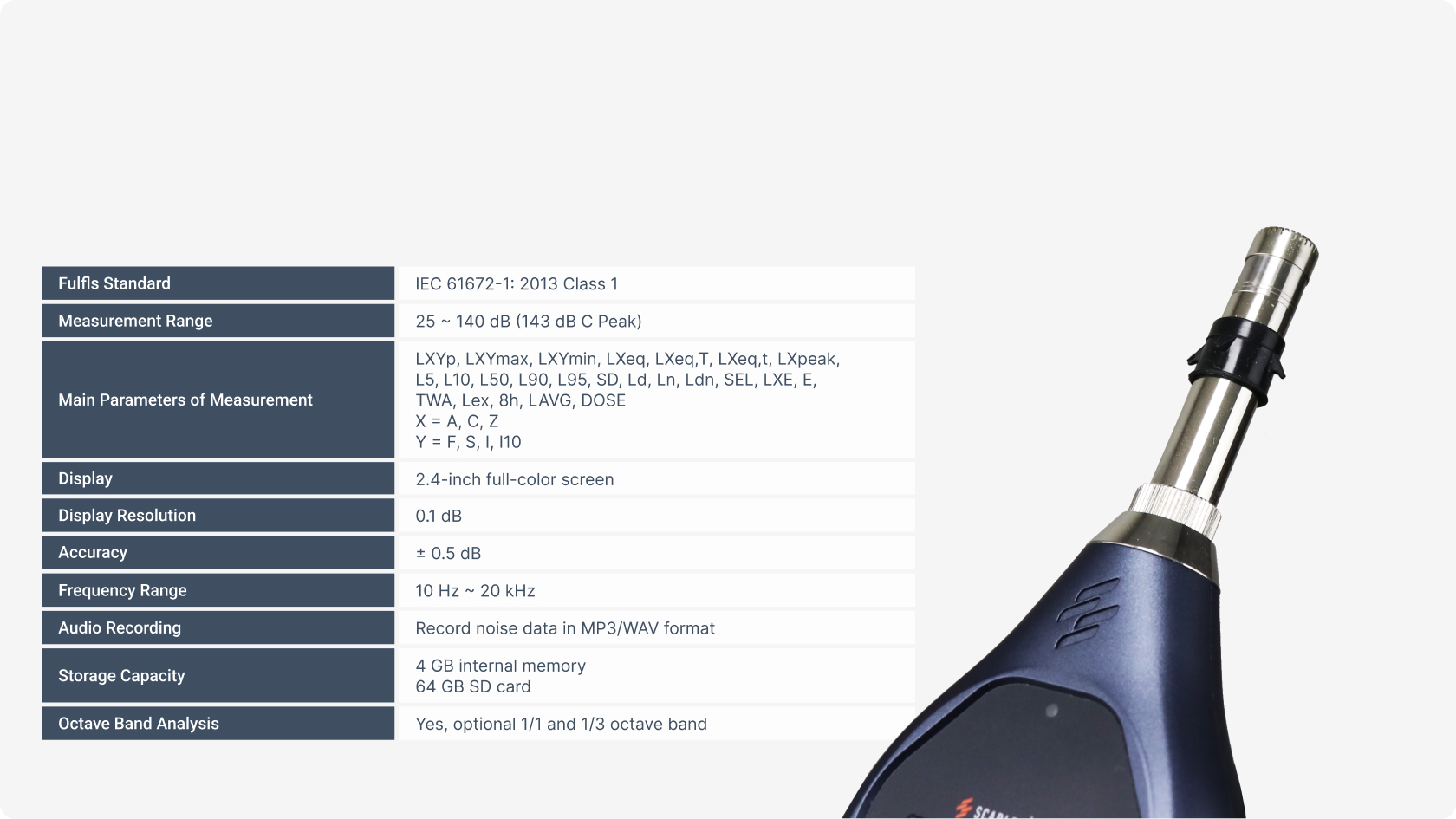
Class 1 sound level meter with integral and statistical calculations, and a dosimeter function, ideal for beginners. Enhance your measurement needs with optional 1/1 and 1/3 octave band.
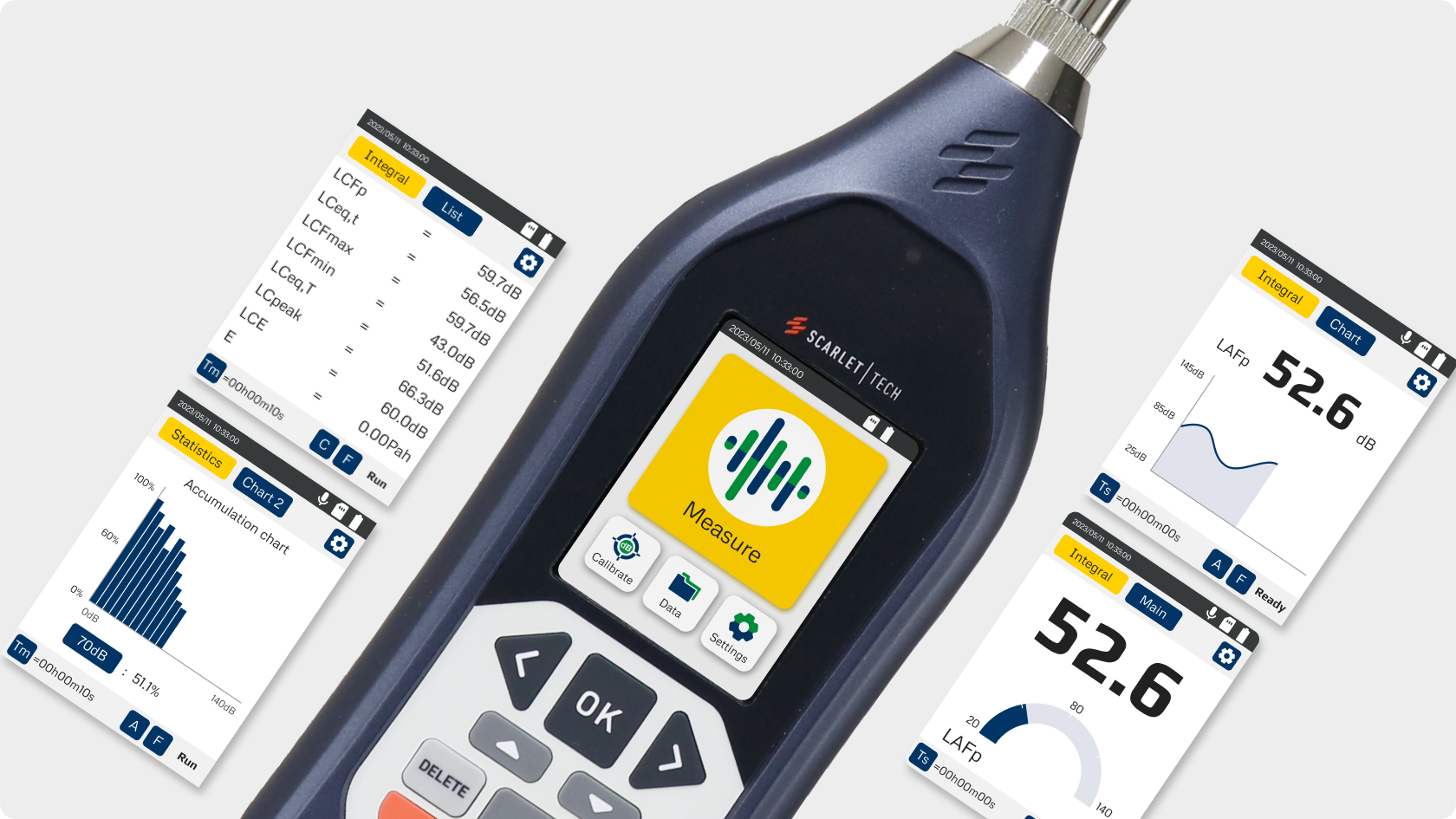
ST-12D makes it easy to read noise measurements through intuitive charts and graphs, enabling quick decision-making and analysis.
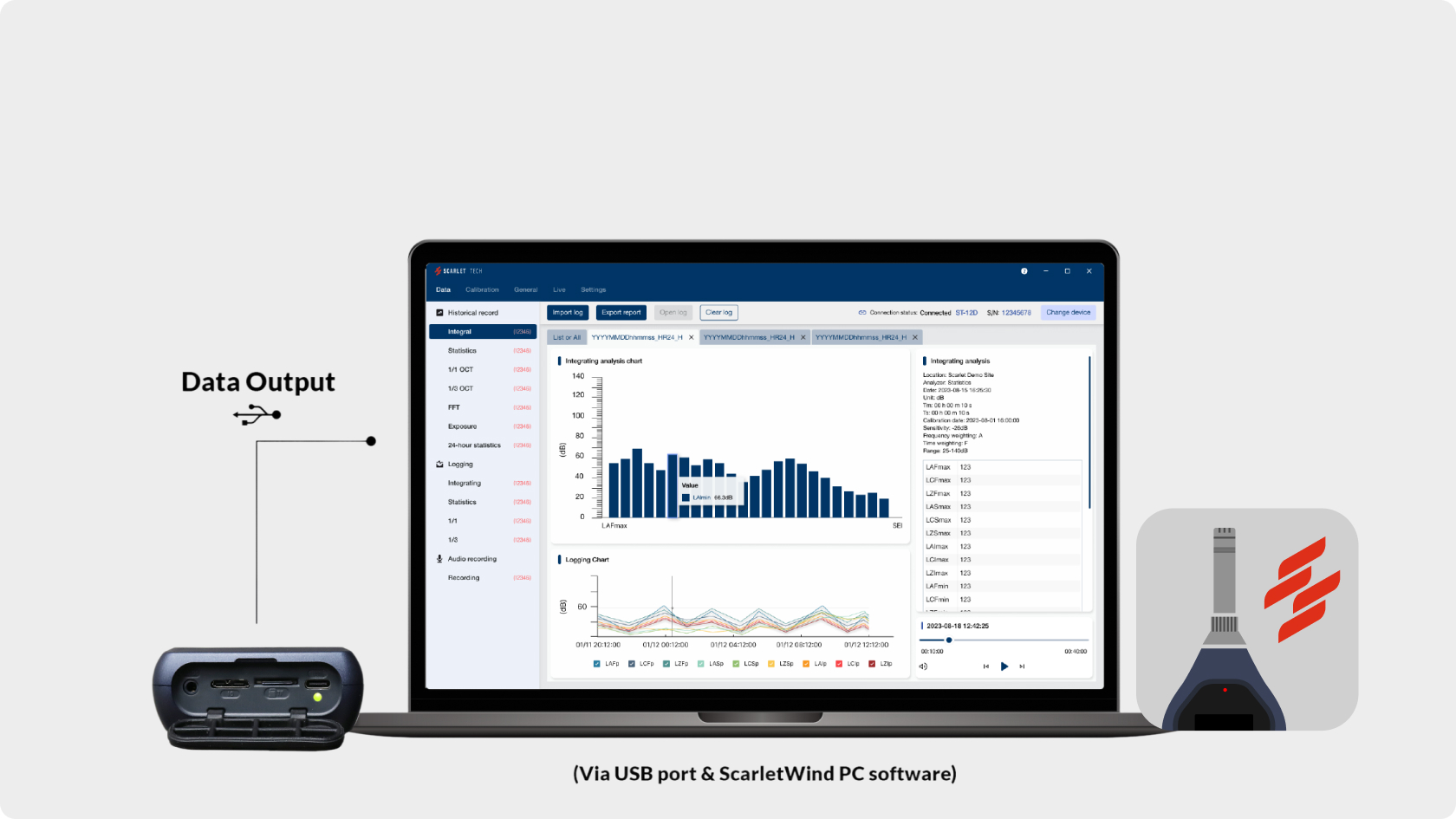
Scarlet developed ScarletSound PC software exclusively for the ST-12D. This software ensures intuitive management of historical records with charts and tables, as well as data exportation.
Interested in This Solution? Get a Quote Now!
Audio Recording
ST-12D offers MP3/WAV audio recording formats with file export capability. Enhance recording efficiency with its trigger mode, activating recording only when sound levels reach a specified limit, effectively optimizing memory usage.
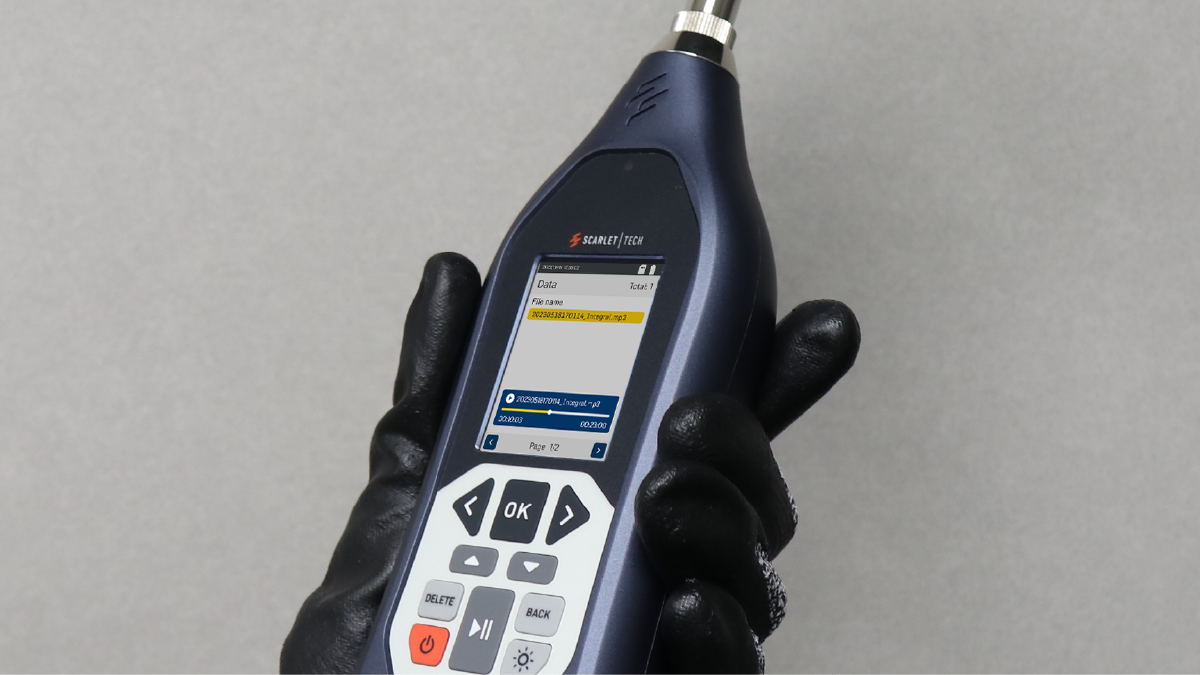
Optional 1/1 & 1/3 Octave Band Analysis
Experience precision in sound assestment with the optional 1/1 and 1/3 octave band analysis features for the ST-12D. These upgrades split noise into smaller frequency bands, helping you identify the noise source.
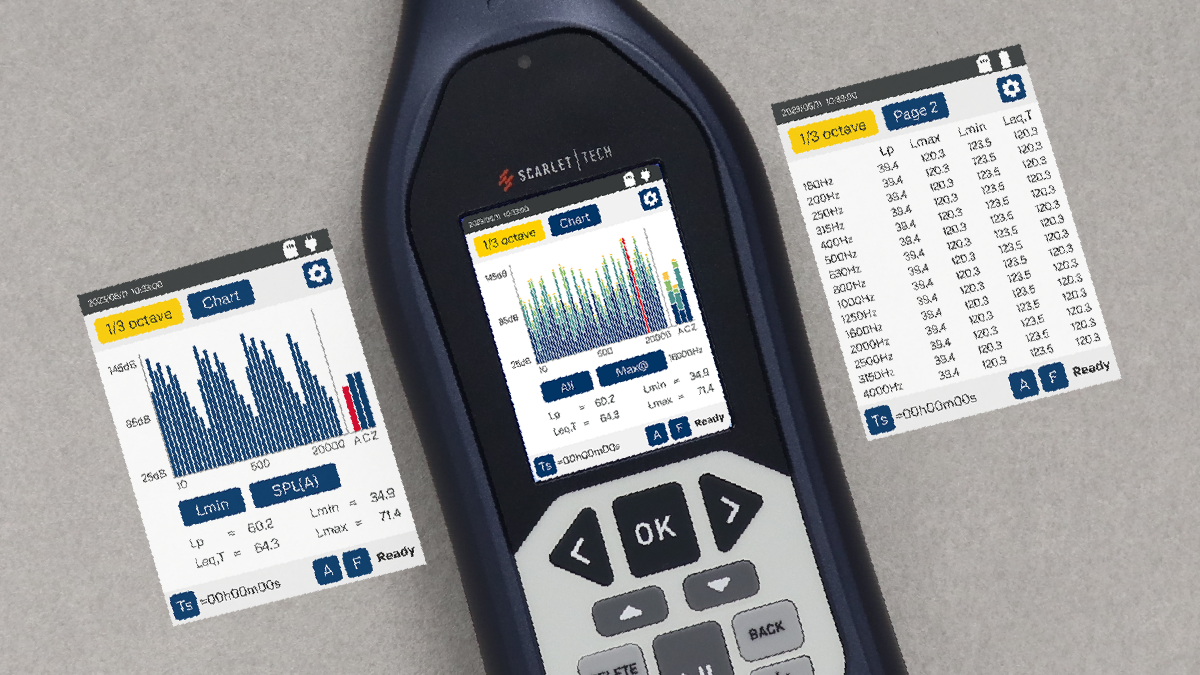
On-the-Go
Waterproof Case
Carry your ST-12D in our durable-design waterproof case, which protects the device and all its accessories, ensuring safe transportation wherever you go.
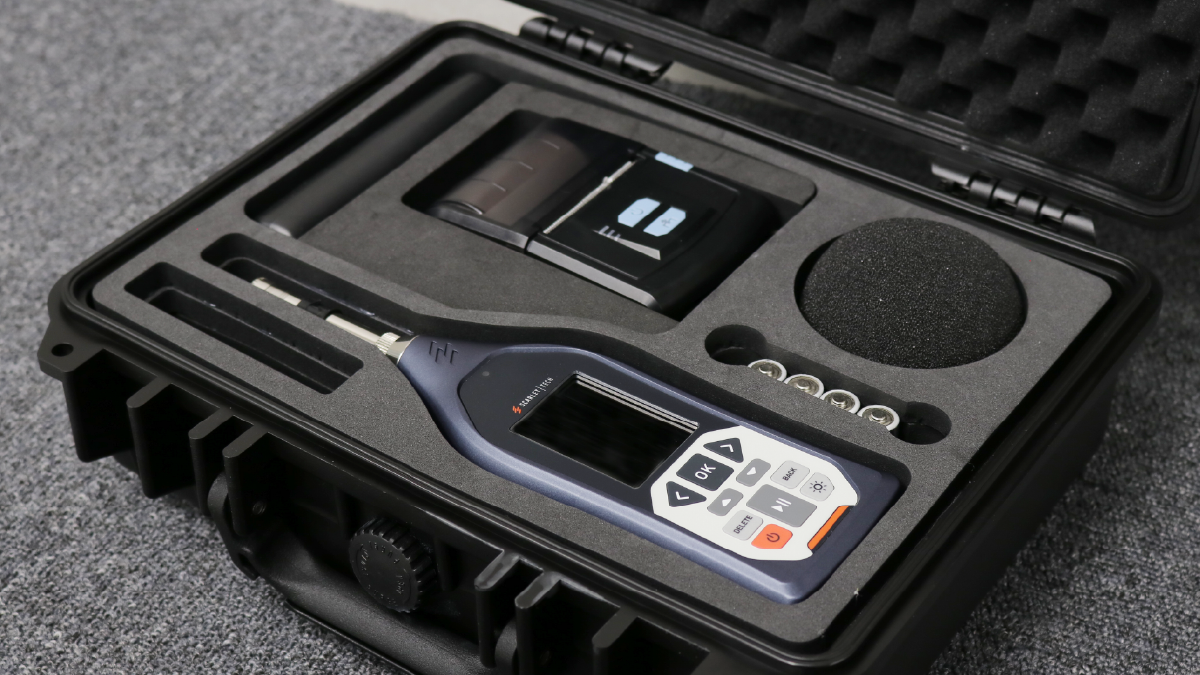
Frequently Asked Questions
Is training required to use the ST-12D?
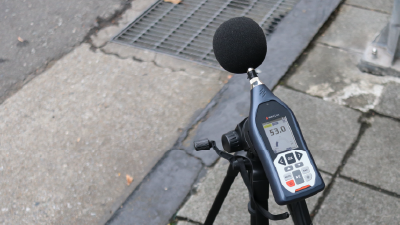
Can I extend the microphone away from the main unit?

Can I connect the ST-12D to external systems or weather stations?
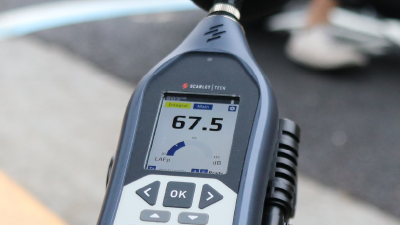
Add-Ons
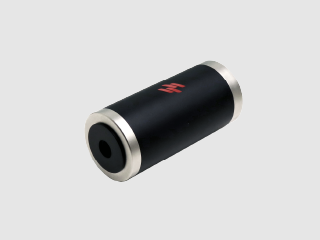
Sound Calibrator
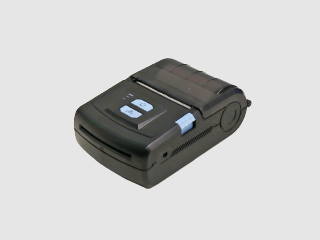
Instant Portable Printer
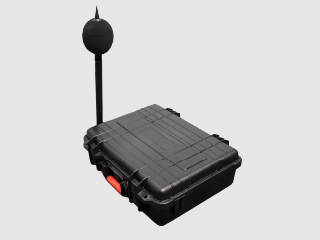
Outdoor Kit
Our Clients
Specifications
- Performance
- Design
- Operation
- Features
- Package List
- FAQ
- Download

| Item | Description |
|---|---|
| Fulfils standard | IEC 61672-1: 2013 Class 1 |
| Main parameters of measurement | LXYp, LXYmax, LXYmin, LXeq, LXeq,T, LXeq,t, LXpeak, L5, L10, L50, L90, L95, SD, Ld, Ln, Ldn, SEL, LXE, E, TWA, Lex, 8h, LAVG, DOSE; X = A, C, Z ; Y = F, S, I, I10 |
| Measurement range | 25 to 140 dB (143 dB C Peak) |
| Frequency range | 10 Hz ~ 20 kHz |
| Accuracy | ± 0.5 dB |
| Frequency weighting | A, C, Z |
| Time weighting | F, S, I, I10 |
| Integrating time | 1s to 99 h 59 m 59 s |
| Audio recording | Record noise data in MP3/WAV format; Synchronize/Trigger mode; Sampling rate: 12 kHz, 24 kHz, 48 kHz / 16 bit, 24 bit |
| Refresh rate | 0.5 s |
| Item | Description |
|---|---|
| Dimensions | 250 × 76 × 33 mm |
| Weight | 340 g |
| Display | 2.4-inch; 240 × 320 pixel full-color display; Adjustable brightness & backlight can be turned off |
| Display resolution | 0.1 dB |
| Output interface | USB type-C, Bluetooth, AC/DC signal, Serial |
| Item | Description |
|---|---|
| Power supply | 4 x AA alkaline batteries; External power supply (USB type-C adapter): 5V, 1A |
| Operation time | Max 24hrs by 4 x AA alkaline batteries (The operation time varies depending on the device settings and battery type) |
| Operation environment | Working temperature: -20 to 60 °C; Relative humidity: 20% to 90% |
| Storage capacity | 4 GB internal memory; 64 GB SD card |
| Features |
|---|
| ▪ IEC 61672-1: 2013 Class 1 |
| ▪ Easy-to-use interface |
| ▪ 2.4" full-color display |
| ▪ Synchronous multi sound analyzers |
| ▪ Leq value with A/C/Z frequency weightings |
| Package List |
|---|
| ▪ ST-12D Class 1 sound level meter |
| ▪ Windscreen |
| ▪ USB-C to USB cable |
| ▪ USB power adapter |
| ▪ Serial to RS232 cable |
| ▪ Serial to USB cable |
| ▪ AA batteries |
| ▪ Calibration certificate |
| ▪ User guide |
| ▪ Waterproof carrying case |
-
No formal training is needed. ST-12D features an intuitive interface, making it easy to use for professionals and beginners alike.
-
An accurate noise measurement instrument that meets IEC 61672-1:2002 standards (or equivalent standards such as BS EN 61672-1:2003). It has tighter tolerances (+/- 1.9 dB at 1 kHz) compared to Class 2 (+/- 2.2 dB). Class 1 meters are ideal for measuring sound pressure, Leq, and peak sound pressure, often required by regulations like the UK’s Noise at Work.
-
Your choice depends on the application:
Class 1: Preferred for environmental noise surveys, low noise levels, legal applications, and standards like ISO 20906:2009 for aircraft sound monitoring.
Class 2: Suitable for less demanding applications without strict accuracy requirements. -
Conduct field calibrations before and after each use. Additionally, have the device professionally calibrated annually to maintain compliance with standards.
-
Using a windscreen or weatherproof outdoor kit helps reduce wind noise and ensures accurate readings in outdoor settings.
-
Yes, Scarlet offers microphone extension cables (available in 2.5m and 5m lengths) that allow the microphone to be positioned away from the meter, ideal for specific monitoring setups.
-
Yes. ST-12D supports analog outputs and RS-232 serial communication, enabling integration with external systems such as weather stations or environmental monitoring system.
-
ScarletSound – Sound Data Management Software for ST-12D and ST-591 (Windows utility)2025.07.1183.27 MB
-
Find the Ideal Sound Level Meter

ST-12D Class 1 Integrating SLMGet A Quote |

ST-11D Class 1 Sound Level MeterMore Info |

ST-15D Class 1 Sound AnalyzerMore Info |
|
|---|---|---|---|
|
Fulfils Standard |
IEC 61672-1:2013 Class 1 | IEC 61672-1:2013 Class 1 | IEC 61260-1:2014 Class 1 |
|
Accuracy |
±0.5 dB | ±0.7 dB | ±0.7 dB |
|
Measurement Range |
27-140 dB | 25-140 dB | 20-142 dB |
|
Display |
240×320 full-color display | 128×64 OLED | 240×320 color screen |
Where does Scarlet Sound Level Meter Apply
BUY NOW!
Thank you for the interest in ST-12D. Please fill out the form below. We will get back to you in few hours.
